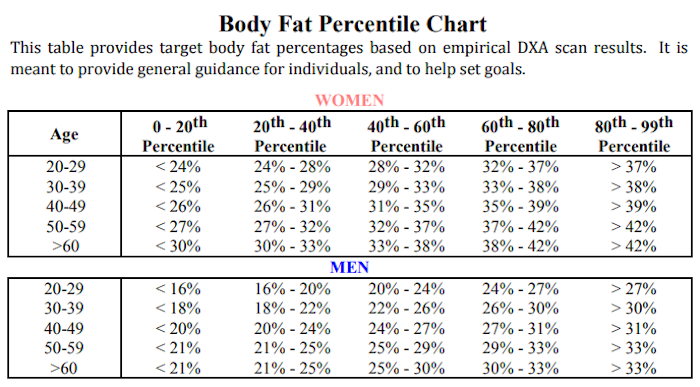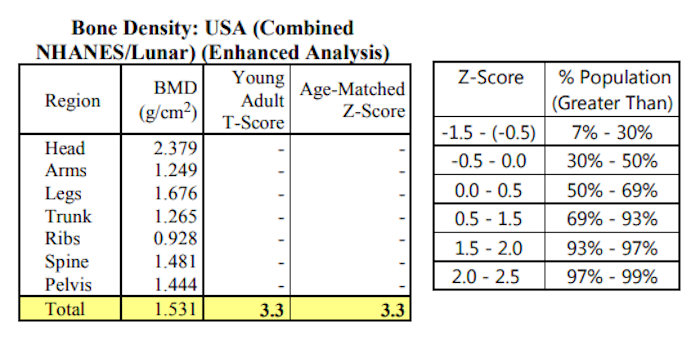If you want to know your lean mass percentage and other cool metrics about your body composition, the DEXA scan is one of the easiest ways you can find out.
The DEXA (Dual-Energy X-Ray Absorptiometry) is a fairly accurate way of measuring your body composition. This includes your bone mineral density as well as your lean body mass and fat mass.
The DEXA scan does this by exposing you to low level x-ray beams throughout your body while you lie on a table. There are few items of interest that the DEXA reveals. One is the lean mass versus fat mass percentage per region (head, arms legs etc..), the other is the bone report that tells you your bone mineral density per region.
I got my scans done at BodySpec, where you can get a scan for 45.00 or 2 scans for 85.00. You can also get your Vo2 max measured as well as your resting metabolic rate (RMR)
I’ve done this 2 years in a row. For consistency, both times I’ve done it was around the same time of day and in a fasted state.
Here are the results:
Lean Tissue and Fat

As you can see, there hasn’t been much change in my body composition from 2017 to 2018. There was a gain of 1 pound of lean tissue and a 0.1 increase in bone mineral content.
This makes sense since there hasn’t been much change to my diet or exercise regiment during that period of time. My strength has increased during that time from consistently, albeit slowly, progressing my weights on certain exercises like the squat and deadlift.
For somebody at my age of 38, being in the 0-20th percentile in terms of body fat is ideal since having more lean tissue versus fat is associated with better cardiovascular health and overall mortality in older people1
For reference, here is a Body Fat Percentile Chart:

Bone Report

The bone density report gives you a Z-Score. The higher the Z-Score, the better. A high score means you have a high bone density which is associated with strong and healthy bones. According to the charts given through the scan, my Z-Score is greater than 99% of the population.
Muscle Balance Report

The muscle balance report shows you the lean mass you have on each of your arms and legs, noting any imbalances you may have. Large imbalances of more than 2 lbs might be something to be concerned about. My stats show that both sides are very similar in mass with the right side containing slightly more mass. Since I am right side dominant, this comes to no surprise.
Concerns of Dexa Scan Accuracy
Dexa scans aren’t perfect but neither are any other methods of measuring body fat percentages. If you ate a large meal or drank a gallon of water before a scan, the scan would most likely register the content as lean body mass.
A good way to accurately track your changes is to make sure you take the test in a fasted state and around the same time of day you took the previous test.
I took the DEXA scan through a company called Body Spec in Los Angeles. Their website has various articles where they compare body fat testing methods, talk about radiation and how water might affect your test results. You can find those articles here.
Conclusion
Based on my DEXA scans, there weren’t any concerns that stood out. My lean body mass is low and my bone density is high. The first time I took a DEXA scan, I was surprised to find that my body fat percentage was under 10%. The consistency of a work out routine and steady diet made it no surprise that the second time around, the measurements were about the same with minor changes.
Moving forward, I will monitor my diet and exercise routine and tweak it based on goals but will still continue to maintain a body fat percentage of under 10%.
Have you ever measured your body fat percentage? Why or why not?

2 thoughts on “Eric’s Dexa Scan Results for 2017 and 2018”